
The effects of staffing shortages are felt throughout the healthcare continuum and won’t dissipate anytime soon if the high demand for nurses persists. As a result, the healthcare industry must look for alternative solutions to combat the negative effects of staffing shortages within the clinical workforce.
In an effort to retain nurses and mitigate further burnout, implementing more efficient technology has become one of the most reliable solutions for alleviating the stress placed on nurses due to staffing challenges.
The Positive Impact of Patient Monitoring Technology on Nursing Staff
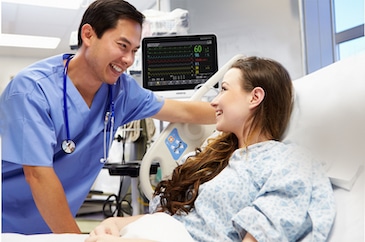
Universal User Interface: With fewer tenured nurses on staff, educators have become harder to retain, which means newer nurses cannot always receive proper training on equipment. Implementing a patient monitoring system with a universal user interface (UI) can help mitigate training barriers for new nurses, allowing them to access patient data easily without the stress of learning different UI’s for each individual monitor. Having a universal UI on both the bedside and ambulatory devices allows for a more efficient patient transition. Nurses can quickly access data on the mobile device where they need it and when they need it, without relying on tenured clinicians to assist each time a patient ambulates.
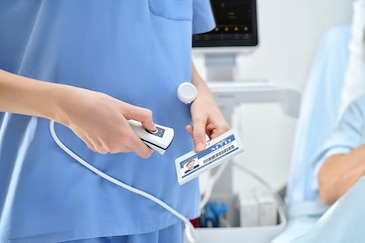
Combatting Alarm Fatigue: Alarm fatigue is a frustrating and potentially dangerous issue that results from an abundance of monitor alarms sounding from multiple devices, some of which set off in error. As hundreds of alarms go off every day, nurses and hospital staff become desensitized to the constant ringing that often results from a false alarm. However, when serious alarms are ignored, this quickly becomes a patient safety issue.
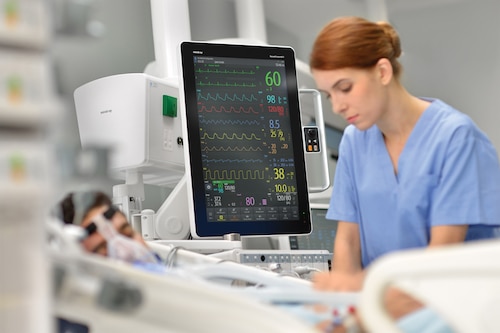
Industry studies show that nurses considered monitor alarms to be burdensome, too frequent, interfering with patient care, and this often resulted in distrust in the alarm system. In addition, research indicates that 72% to 99% of all alarms are false or non-actionable alarms, contributing to this alarm fatigue crisis in hospitals. [1]
As alarm fatigue becomes a growing hazard, it is necessary to put procedures in place to help identify important alarms and help to filter out the “noise” of non-actionable alarms. Monitoring devices that provide customizable settings and feature advanced algorithms developed to improve and smooth alarm detection, can significantly reduce the stress placed on nurses during their shifts, contributes to an efficient workflow and positively impacts the clinician’s patient care focus.
The Financial Impact of the Nursing Shortage
While patient monitoring technology might be the best available solution for helping to bridge the gap in the nurse staffing shortage, more is needed to solve the larger issue of why nurses are leaving the workforce altogether. Ideally, only hiring more nurses can truly solve this growing problem, but the reality is that nurses feel overworked and underpaid, especially since the COVID-19 pandemic. As a result, new nurses demand higher salaries or a per diem schedule, which financially impacts the healthcare industry. The 2022 Nursing Workforce Study states that pre-tax earnings for RNs increased from $70,000 to $80,000 between 2020 and 2022.
Investing in the right technology can help counteract the financial implications of the nursing shortage by providing value-based care for which hospitals can charge and get reimbursement. Introducing monitoring systems that can help to solve training gaps, reduce manual errors, and combat alarm fatigue will assist with maximizing uptime and minimizing the total cost of ownership.
The Mindray Difference
At Mindray, we understand the challenges nurses face as a result of staffing gaps and that delivering high-quality patient care has never been more essential. Our intuitive patient monitoring solutions help streamline patient care and ensure clinicians have quick access to comprehensive and meaningful data at the bedside and beyond. Mindray’s BeneVision N-Series Patient Monitors consist of six monitors, all with the same user interface – this innovative solution allows you to choose your ideal display size and parameter capabilities. The Mindray VS 9 Vital Signs Monitor is designed to be connected so clinicians can send vital signs at the POC, simplifying workflow, improving efficiencies, and reducing errors.
Explore Mindray Patient Monitoring
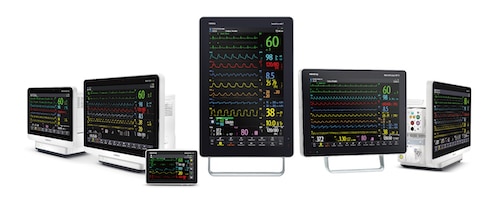
|
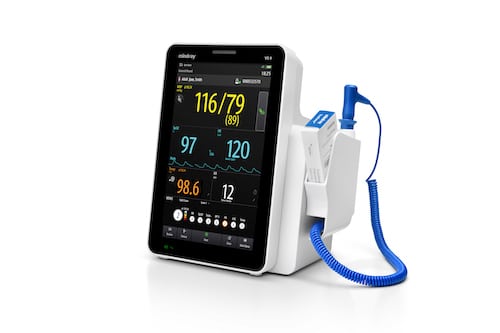
|
|---|---|
| BeneVision N-Series Patient Monitors | VS 9 Vital Signs Monitor |
| The BeneVision N-Series brings a premier patient monitoring solution to the forefront of healthcare, offering a comprehensive, scalable, and efficient monitoring platform that will change how clinicians manage their patients. | Addressing the needs of low acuity areas, the VS 9 is easy-to-use vital signs monitor designed to elevate your department’s workflow. |
References: